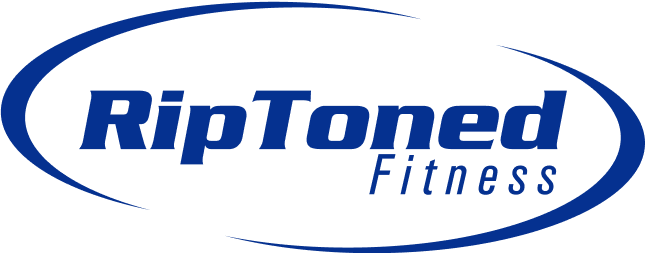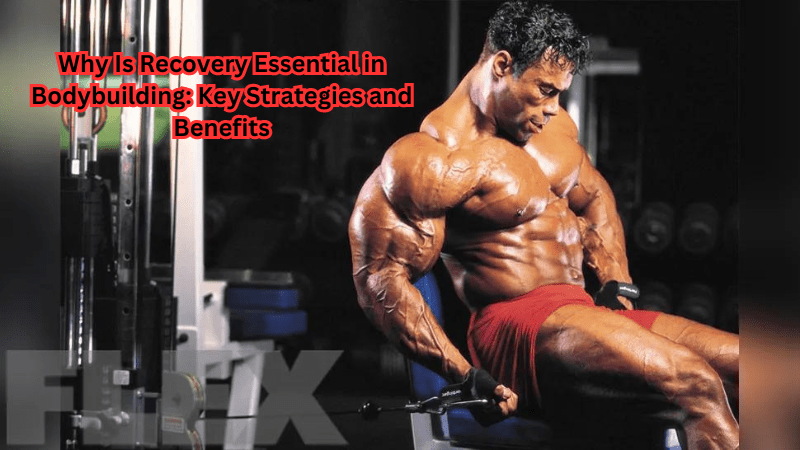Why is recovery essential in bodybuilding?
Recovery is the time when your muscles repair and grow stronger after workouts. Without enough recovery, your progress stalls, and the risk of injury increases.
This article covers why muscle recovery is crucial and how it helps you achieve bodybuilding success.
The Importance of Recovery in Bodybuilding
In the pursuit of muscle growth and strength, many bodybuilders emphasize intense workouts and strict nutrition. However, muscle recovery plays a critical role in this process. Recovery supports muscle repair and growth, enhancing performance in bodybuilding. Adequate recovery periods facilitate muscle repair and improve performance outcomes, making it an indispensable part of any effective training regimen.
During rest and recovery periods, the body repairs, rebuilds, and strengthens itself, leading to improved health and performance. Including rest days in a bodybuilding routine ensures muscles have the opportunity to regenerate, ultimately boosting strength and muscle growth over time.
Making recovery a priority in a training schedule ensures muscles have sufficient rest to repair properly, which is essential for progress. Whether through passive recovery, active recovery, or a combination of both, allowing your body the necessary time to recover can significantly impact your fitness goals.
Muscle Repair and Growth
During intense workouts, muscle fibers undergo microscopic tears, initiating the repair process. This muscle damage is a natural part of resistance training and is necessary for muscle growth. However, the actual process of building muscle happens during rest and recovery, not during the exercise itself.
To repair muscle damage effectively, consider the following:
- Consume an adequate amount of protein after exercise: Protein aids in muscle repair and growth, helping to rebuild damaged muscle fibers and increase muscle mass.
- Incorporate carbohydrates: Carbohydrates replenish glycogen stores, essential for muscle repair and performance.
- Stay hydrated: Hydration greatly influences the muscles’ ability to recover after intense physical activity.
By focusing on these key areas, you can enhance your muscle recovery process.
Muscle recovery involves not only repairing damage but also preparing muscles for future workouts. This process leads to increased strength and endurance, enabling you to push harder in subsequent training sessions. By understanding and optimizing recovery, you can maximize fitness gains and achieve bodybuilding goals more effectively.
Prevention of Overuse Injuries
Incorporating adequate rest and recovery into your training program helps prevent overuse injuries. Prioritizing rest ensures proper lifting form and reduces the risk of overtraining, which can lead to overuse injuries—a common issue among bodybuilders who push their bodies too hard without sufficient recovery.
Scheduling rest days is essential for effective recovery and minimizing the risk of overuse injuries. Incorporating flexibility exercises into your routine enhances muscle elasticity and aids injury prevention. Additionally, maintaining gym equipment reduces the likelihood of accidents during workouts.
Avoiding weights that exceed your capability helps protect against joint and muscle injuries. Regular health check-ups are crucial for early identification of potential issues that could lead to injuries. By focusing on these aspects of recovery, you can maintain a healthier, more sustainable training program that supports long-term progress.
Enhancing Performance and Strength
Proper recovery practices can significantly enhance overall strength and performance in workouts. Active recovery promotes blood flow, aiding muscle repair and reducing soreness. Aerobic training facilitates recovery at both muscular and nervous system levels, making it an important component of an effective recovery strategy.
Active recovery improves blood circulation, removes waste products, and delivers nutrients for muscle repair. This process reduces muscle soreness and enhances overall mobility, enabling better performance in subsequent training sessions. Cross-training with diverse exercises balances muscle usage and lowers injury risk, enhancing performance and strength.
Incorporating active recovery techniques into your routine ensures your muscles are well-prepared for the next workout. This approach aids muscle recovery and contributes to overall fitness gains and optimal health, making it a vital element in achieving your bodybuilding goals.
Types of Recovery Strategies
Recovery strategies are crucial components of effective bodybuilding regimens. The two basic types of recovery are passive and active recovery. Tailoring these strategies to individual workout needs maximizes their effectiveness.
Both passive and active recovery have unique benefits in the recovery process. Passive recovery involves complete rest with minimal physical exertion, while active recovery includes light exercises that promote blood flow and muscle repair. Implementing these strategies can lead to better results from your training program.
Passive Recovery
Passive recovery involves a complete break with minimal physical exertion. This type of recovery is crucial for muscle tissue repair, allowing the body to rest and regenerate. Effective recovery phases include rest, refueling, and regeneration.
Activities like massage can alleviate muscle soreness and improve recovery, supporting performance. Incorporating passive recovery into your routine ensures that muscles have the time to repair and grow, leading to better overall performance and health.
Active Recovery
Active recovery involves light exercise performed shortly after intense exercise workouts to aid recovery. Current fitness trends strongly support active recovery over complete rest. Engaging in active recovery boosts blood flow to the muscles, promoting faster recovery.
Active recovery techniques can reduce muscle soreness and enhance overall mobility. Effective active recovery activities include:
- gentle yoga
- walking
- swimming
- recovery runs
These non-taxing activities utilize light weights and compound exercises to enhance blood flow.
During active recovery sessions, focus on muscle groups like the glutes, hamstrings, and abs. Mobility drills and techniques like foam rolling and compression are also helpful post-workout recovery methods. Incorporating active recovery into your routine ensures your muscles are well-prepared for future workouts.
Sleep and Nutrition
Adequate sleep is crucial for muscle recovery, supporting hormone production that aids muscle growth. Improving sleep quality is vital for muscle repair and hormonal balance during recovery. Poor sleep can hinder performance improvements.
Proper nutrition and hydration are fundamental for effective muscle recovery. Adequate protein intake after exercise supports muscle recovery and can lead to better strength outcomes.
Eating a balanced diet prevents nutrient deficiencies that could hinder muscle recovery. Staying properly hydrated and nourished supports muscle recovery and overall health in bodybuilders. Effective hydration in recovery routines enhances muscle repair and performance.
Monitoring and Adjusting Recovery Periods
Recovery times vary based on workout intensity and individual fitness levels, ranging from 24 hours to several days during the recovery period. Wearable devices monitor real-time training intensity, allowing adjustments based on individual performance. Tracking recovery metrics like heart rate variability (HRV) helps assess recovery and stress levels after workouts.
Smartwatches and fitness trackers provide physiological data that inform training adjustments and recovery needs. Monitoring sleep quality through wearables offers insights into recovery effectiveness and muscle repair. Using these tools prevents overtraining and optimizes recovery periods for best results.
Integrating Recovery into Your Training Program
At least one day off each week is recommended to facilitate recovery. Low-intensity activities on rest days enhance recovery without hindering muscle repair. Varying workout intensity throughout the week reduces the risk of overtraining.
Strategically alternating muscle groups during exercise training workouts allow adequate recovery time. Keeping a training log helps track workouts and recovery progress.
Integrating these strategies into your training program ensures muscles have the time to repair and grow, leading to better overall performance and health.
Signs You Need More Recovery
Psychological relaxation through breaks and mindfulness practices improves mental recovery and overall performance. Signs that indicate a need for a rest day include agitation, moodiness, sleeplessness, poor appetite, and feelings of stress and depression. If experiencing stress in daily life, factor in more recovery time.
Listening to your body and recognizing these signs can inform you when to increase recovery periods for optimal performance. By paying attention to these signs, you ensure your body gets the adequate rest it needs to perform at its best.
Summary
In summary, recovery is an essential aspect of bodybuilding that should never be overlooked. It allows muscles to repair and grow, prevents overuse injuries, and enhances overall performance and strength. By incorporating passive and active recovery strategies, ensuring proper sleep and nutrition, and monitoring recovery periods with wearable technology, you can optimize your training program for better results.
Remember, listening to your body and recognizing the signs that you need more recovery is crucial. By prioritizing rest and recovery, you can achieve your fitness goals and maintain optimal health and performance.
Frequently Asked Questions
Why is recovery important in bodybuilding?
Recovery is essential in bodybuilding because it enables muscle repair and growth, reduces the risk of injuries, and improves overall performance and strength. Prioritizing recovery will ultimately help you achieve your fitness goals more effectively.
What are some effective active recovery techniques?
Incorporating gentle yoga, walking, swimming, recovery runs, and mobility drills can significantly enhance your active recovery. These techniques will help improve circulation and promote muscle healing.
How does sleep affect muscle recovery?
Sleep significantly impacts muscle recovery by promoting hormone production essential for growth and repair, ensuring effective recovery after physical activity.
How can I monitor my recovery periods?
To effectively monitor your recovery periods, consider using wearable devices such as smartwatches and fitness trackers, as they can track training intensity, heart rate variability, and sleep quality. This data will help you understand your recovery needs better and optimize your training.
What are the signs that I need more recovery?
If you're experiencing agitation, moodiness, sleeplessness, poor appetite, increased stress, or feelings of depression, it's a clear indication that you need more recovery time. Prioritizing rest can help improve your overall well-being.


